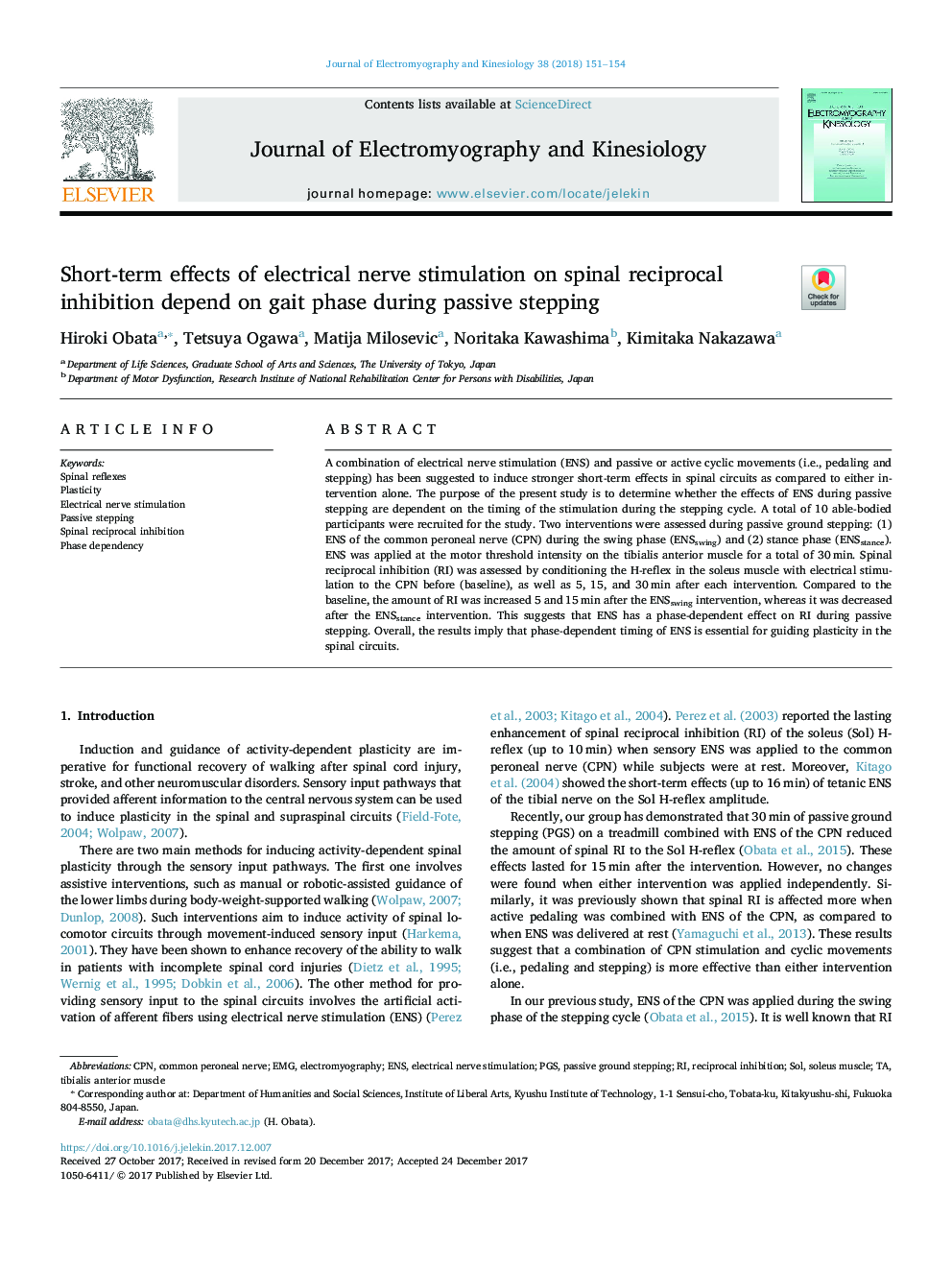| Article ID | Journal | Published Year | Pages | File Type |
|---|---|---|---|---|
| 8799819 | Journal of Electromyography and Kinesiology | 2018 | 4 Pages |
Abstract
A combination of electrical nerve stimulation (ENS) and passive or active cyclic movements (i.e., pedaling and stepping) has been suggested to induce stronger short-term effects in spinal circuits as compared to either intervention alone. The purpose of the present study is to determine whether the effects of ENS during passive stepping are dependent on the timing of the stimulation during the stepping cycle. A total of 10 able-bodied participants were recruited for the study. Two interventions were assessed during passive ground stepping: (1) ENS of the common peroneal nerve (CPN) during the swing phase (ENSswing) and (2) stance phase (ENSstance). ENS was applied at the motor threshold intensity on the tibialis anterior muscle for a total of 30â¯min. Spinal reciprocal inhibition (RI) was assessed by conditioning the H-reflex in the soleus muscle with electrical stimulation to the CPN before (baseline), as well as 5, 15, and 30â¯min after each intervention. Compared to the baseline, the amount of RI was increased 5 and 15â¯min after the ENSswing intervention, whereas it was decreased after the ENSstance intervention. This suggests that ENS has a phase-dependent effect on RI during passive stepping. Overall, the results imply that phase-dependent timing of ENS is essential for guiding plasticity in the spinal circuits.
Keywords
Related Topics
Health Sciences
Medicine and Dentistry
Orthopedics, Sports Medicine and Rehabilitation
Authors
Hiroki Obata, Tetsuya Ogawa, Matija Milosevic, Noritaka Kawashima, Kimitaka Nakazawa,
